Transcriptional signature of durable effector T cells elicited by a replication defective HCMV vaccine
- PMID: 38561339
- PMCID: PMC10984989
- DOI: 10.1038/s41541-024-00860-w
Transcriptional signature of durable effector T cells elicited by a replication defective HCMV vaccine
Abstract
Human cytomegalovirus (HCMV) is a leading infectious cause of birth defects and the most common opportunistic infection that causes life-threatening diseases post-transplantation; however, an effective vaccine remains elusive. V160 is a live-attenuated replication defective HCMV vaccine that showed a 42.4% efficacy against primary HCMV infection among seronegative women in a phase 2b clinical trial. Here, we integrated the multicolor flow cytometry, longitudinal T cell receptor (TCR) sequencing, and single-cell RNA/TCR sequencing approaches to characterize the magnitude, phenotype, and functional quality of human T cell responses to V160. We demonstrated that V160 de novo induces IE-1 and pp65 specific durable polyfunctional effector CD8 T cells that are comparable to those induced by natural HCMV infection. We identified a variety of V160-responsive T cell clones which exhibit distinctive "transient" and "durable" expansion kinetics, and revealed a transcriptional signature that marks durable CD8 T cells post-vaccination. Our study enhances the understanding of human T-cell immune responses to V160 vaccination.
© 2024. The Author(s).
Conflict of interest statement
The study was in part funded by Merck & Co., which was the sponsor of the V160-002 clinical trial. The Sponsor had no influence on data collection and interpretation of the data. The authors declare no competing interests.
Figures
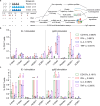
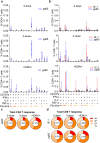
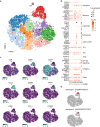
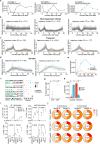

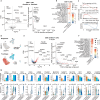
Similar articles
-
A Replication-Defective Human Cytomegalovirus Vaccine Elicits Humoral Immune Responses Analogous to Those with Natural Infection.J Virol. 2019 Nov 13;93(23):e00747-19. doi: 10.1128/JVI.00747-19. Print 2019 Dec 1. J Virol. 2019. PMID: 31511385 Free PMC article. Clinical Trial.
-
Functional Evaluation and Genetic Evolution of Human T-Cell Responses After Vaccination With a Conditionally Replication-Defective Cytomegalovirus Vaccine.J Infect Dis. 2021 Jun 4;223(11):2001-2012. doi: 10.1093/infdis/jiaa631. J Infect Dis. 2021. PMID: 33031517 Clinical Trial.
-
Safety, efficacy, and immunogenicity of a replication-defective human cytomegalovirus vaccine, V160, in cytomegalovirus-seronegative women: a double-blind, randomised, placebo-controlled, phase 2b trial.Lancet Infect Dis. 2023 Dec;23(12):1383-1394. doi: 10.1016/S1473-3099(23)00343-2. Epub 2023 Aug 31. Lancet Infect Dis. 2023. PMID: 37660711 Clinical Trial.
-
Human cytomegalovirus (HCMV) infection/re-infection: development of a protective HCMV vaccine.New Microbiol. 2019 Jan;42(1):1-20. Epub 2019 Jan 21. New Microbiol. 2019. PMID: 30671581 Review.
-
Prospects of Cytomegalovirus-Specific T-Cell Receptors in Clinical Diagnosis and Therapy.Viruses. 2023 Jun 7;15(6):1334. doi: 10.3390/v15061334. Viruses. 2023. PMID: 37376633 Free PMC article. Review.
Cited by
-
Complete cross strain protection against congenital cytomegalovirus infection requires a vaccine encoding key antibody (gB) and T-cell (immediate early 1 protein) viral antigens.bioRxiv [Preprint]. 2025 Jun 20:2025.06.18.660432. doi: 10.1101/2025.06.18.660432. bioRxiv. 2025. PMID: 40611892 Free PMC article. Preprint.
-
A vaccine against cytomegalovirus: how close are we?J Clin Invest. 2025 Jan 2;135(1):e182317. doi: 10.1172/JCI182317. J Clin Invest. 2025. PMID: 39744948 Free PMC article.
-
Developing a Vaccine Against Human Cytomegalovirus: Identifying and Targeting HCMV's Immunological Achilles' Heel.Vaccines (Basel). 2025 Apr 22;13(5):435. doi: 10.3390/vaccines13050435. Vaccines (Basel). 2025. PMID: 40432047 Free PMC article. Review.
References
-
- Institute of Medicine. In Vaccines for the 21st Century: A Tool for Decision making (eds Stratton, K. R., Durch, J. S. & Lawrence, R. S.) (The National Academies Press, Washington, DC, 2000). 10.17226/5501. - PubMed
Grants and funding
LinkOut - more resources
Full Text Sources
Research Materials

